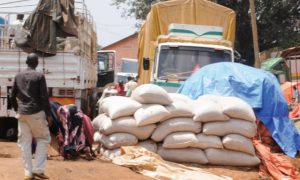
Taking stock of Uganda’s economy 55 years after independence
Kampala, Uganda | COMMENT | SARAH LOGAN| October 9 marked 55 years since Uganda’s independence in 1962. The country’s economy has seen many changes during this time, affected by periods of political instability, civil war, fluctuating global commodity prices, and various economic reforms. Trends in recent years are positive, although some key challenges remain.
Economic data for the early years after Uganda’s independence is scarce. But economic growth appears to have been impressive for the first eight years. Agriculture dominated the economy, with cotton and coffee comprising 76% of exports. Five years after Uganda’s independence it joined forces with Kenya and Tanzania to form the East African Community, with the intention of creating a common market.
In 1971 Idi Amin overthrew President Milton Obote in a military coup and Uganda went into rapid political and economic decline. “Foreign” economic interests were eliminated and some 70,000 residents of Asian and European descent were expelled from the country. Firms and factories that had been the backbone of Uganda’s economy were expropriated. This, combined with Amin’s massive military spending, sent the economy into free fall. External debt climbed and Uganda’s investor confidence was shot. Regional relations deteriorated and the East Africa Community was disbanded in 1977.
Amin was finally overthrown in 1979 and Obote took over the presidency again. Uganda’s economy had been devastated and significant economic reforms were needed. This involved removing price controls, floating the exchange rate, and tightening government spending. Owners of expropriated firms and properties were encouraged to return.
After five years of civil war, Yoweri Museveni and the National Resistance Movement (NRM) took power in 1986. The economy was in deep recession. With International Monetary Fund support, the NRM undertook major economic reforms aimed at encouraging private sector growth and diversifying Uganda’s agricultural exports. Uganda’s over-reliance on a small number of agricultural exports, notably coffee, had left the economy vulnerable to fluctuations in production and swings in global commodity markets.
Under these early reforms, the Ugandan shilling was devalued and budgetary constraints were adopted. Inflation, which had peaked at 190% in 1987, was brought down to 26% by 1991. Additional reforms further limited government spending and borrowing and significantly reduced the size of the civil service and the army.
The post ECONOMY: Which way Uganda? appeared first on The Independent Uganda:.
Source: Independent
More
411 UG brings you all the latest News and Ugandan Music. Browse Featured News, Entertainment, Current Affairs, Technology, Interviews, Relationships and much more.








































































Share this post: